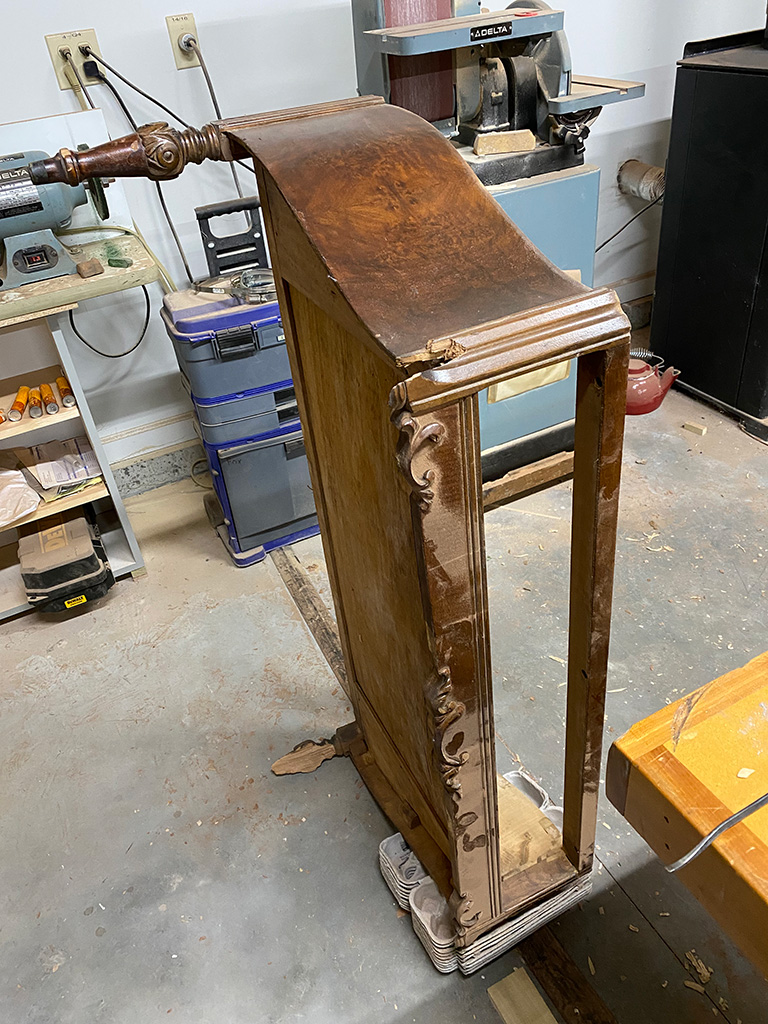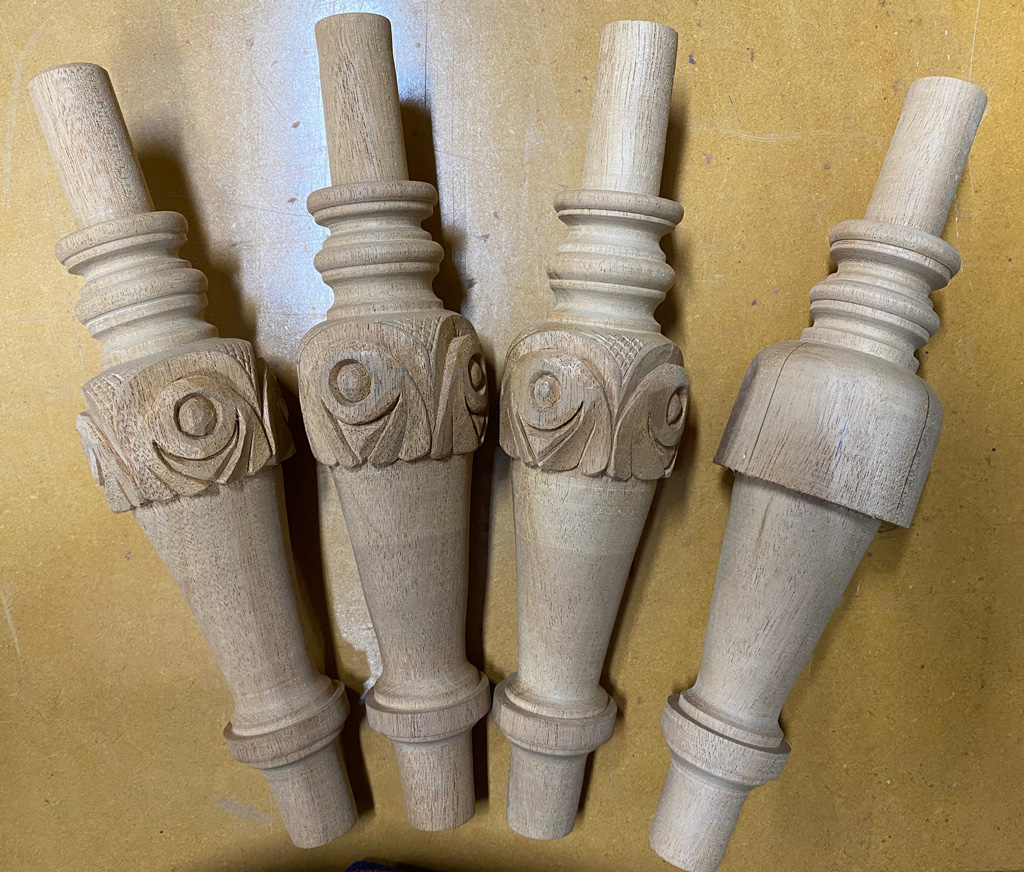My husband is an architectural woodturner. Which means, in essence, that he makes round things out of wood. He makes things like chair legs, porch posts, stair balusters, and decorative bits.
Much of what he does is for restoration projects. If you’re building a new home and putting in a staircase, you’ll probably buy balusters from the building supply. It’s less expensive and they have lots of nice patterns available. If your home is older and you need to have just a couple replaced because someone, or something, over the years busted a few out, you’ll go to a guy like Jim because the building supply store doesn’t stock the design you have and it is cheaper to have a few custom-made than to replace the whole set.
The case is the same for old furniture. If you’ve a beloved chair that’s been handed down through the generations and it needs a little care, a guy like Jim can help with the repair of broken parts.
 The thing about fine furniture, though, is that it is often decorated with woodcarving. Other woodturners might do a little carving from time to time. Jim doesn’t care to. That’s where I come in. I do woodcarving.
The thing about fine furniture, though, is that it is often decorated with woodcarving. Other woodturners might do a little carving from time to time. Jim doesn’t care to. That’s where I come in. I do woodcarving.
One of the first things you learn when it comes to restoration, is that beauty is really only in the eye of the beholder. And everyone’s eye is different. There’s a lot of ugly out there. We don’t restore a piece because it is beautiful. We lovingly restore it because it has meaning to its owner.
This, I think, is especially true when it comes to woodcarving on furniture. A little bit here or there can really improve the overall look of a piece, making it much more interesting to behold. However, the actual cuts made into the wood can be crude. In the restoration business, you have to reproduce what is there, not improve upon it. And so, in the name of beauty, I do what I think is a lot of ugly carving.
But I don’t mind. It is a fascinating puzzle to me to figure out what tools and procedures the original maker used to create the work, and then to determine how I can reproduce it with my toolset and skill level. Some jobs are easier than others. One thing I have learned: there are infinitely more tools that have been used in woodcarving than I will ever own, and I have a lot of tools.

And so I happened upon this sad piece. I don’t really know what it is, but it must be part of something elegant. It probably has a drawer and a larger piece that sits on top. It’s doubtful that I will ever see the completed piece, though.
Three legs are missing. The fourth is pretty beat up, but the refinisher felt that he could restore it. So it was up to us to come up with three new legs. Jim did the woodturning. I did the carving. The customer (the refinisher) was satisfied with the result. It is his job to assemble the piece and make it whole and beautiful. (We don’t do finishing here. That’s a whole ’nuther discipline.)
I do hope that the owner of the piece is able to love it again. It is not the kind of piece that I would love to have in my home. But that doesn’t matter. I did love contributing the little part to its restoration. For me, that is enough.

